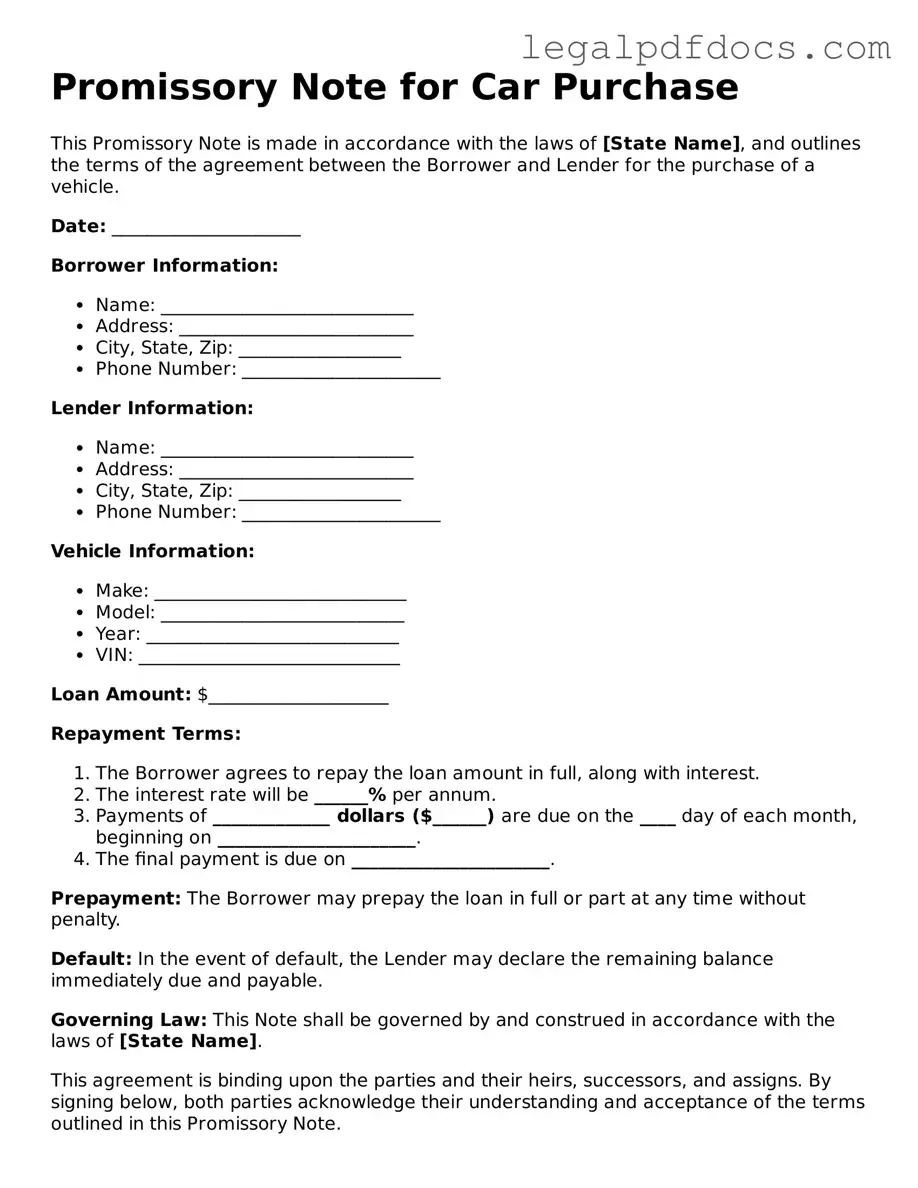Promissory Note for a Car Template
A Promissory Note for a Car is a written agreement in which one party promises to pay a specific amount of money to another party, typically in exchange for the vehicle. This document outlines the terms of the loan, including the payment schedule and interest rate, ensuring both parties understand their obligations. To get started, fill out the form by clicking the button below.
Open Promissory Note for a Car Editor Here
